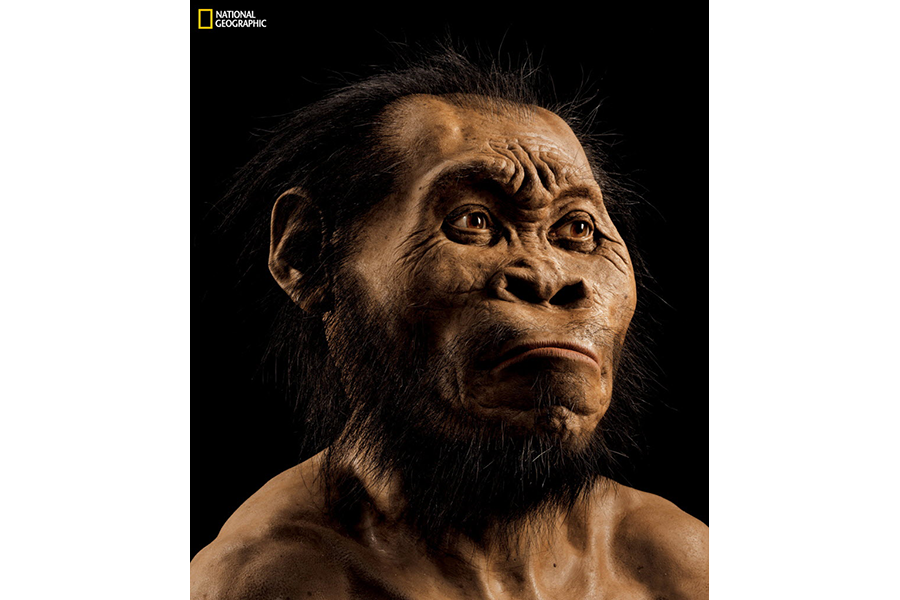How Facebook helped unearth a new branch on humans' ancestral family tree
Loading...
Social media users have become accustomed to growing their personal networks on Facebook, but one paleoanthropologist used the social network to help expand the entire human race's family tree.
It all began in October 2013 with an ad searching for small archaeologists or paleontologists posted on Facebook by Lee Berger, a professor at the University of the Witwatersrand in Johannesburg, South Africa. The social network came through, and on Thursday, Berger and his recruits announced that they had found a new human ancestor – a discovery that may revise the scientific community's understanding of where and how hominids originated.
Berger’s ad called for someone experienced in paleontology or archaeology, unafraid of cramped places, and willing to drop everything and fly to South Africa within the month, The Atlantic reports. “The catch is this – the person must be skinny and preferably small,” he wrote. “They must not be claustrophobic, they must be fit, they should have some caving experience, climbing experience would be a bonus.”
From the ad, Berger told The Atlantic he received more than 60 qualified applicants within a few days. From those, six scientists – all women of slight build – were sent on the fossil-finding mission.
The excavation site, about 30 miles northwest of Johannesburg, is a pitch dark chamber at the end of a zig-zagging path through a cave that requires squeezing through passages that are as narrow as 7 1/2 inches; the cloister has yielded some 1,550 specimens since its discovery in 2013. The fossils uncovered so far represent at least 15 skeletons, a scale practically unheard of in a research community of archeologists and paleontologists that normally relies on bone fragments that rarely add up to a complete organism.
Researchers named the newly discovered hominid Homo naledi (nah-LEH-dee), reflecting the "Homo" evolutionary group, which includes modern humans and our closest extinct relatives, and the word for "star" in a local language, as the trove was found deep in the Rising Star cave system.
Look at its pelvis or shoulders, says Berger, and you would think it was an ape-like Australopithecus, which appeared in Africa about 4 million years ago and is thought to be an ancestor of Homo. But look at its foot and you could think it belonged to our species, which appeared just 200,000 years ago, according to New Scientist.
The differences in traits lead to a fairly basic question that scientists are still puzzling over: How old are the bones?
And another unsolved mystery is how the bones – thousands in all – got to the cave in the first place. The researchers said they suspect the naledi may have repeatedly deposited their dead in the room. However, the room, which is accessed from a 12 meter vertical drop, may have simply been a death trap for individuals that found their own way in.
Berger said researchers are not claiming that naledi was a direct ancestor of modern-day people, and experts unconnected to the project have been critical.
Rick Potts, director of the human origins program at the Smithsonian Institution's Natural History Museum, who was not involved in the discovery, told the Associated Press that without an age, "there's no way we can judge the evolutionary significance of this find."
If the bones are about as old as the Homo group, that would argue that naledi is "a snapshot of ... the evolutionary experimentation that was going on right around the origin" of Homo, he told AP. If they are significantly younger, it either shows the naledi retained the primitive body characteristics much longer than any other known creature, or that it re-evolved them, he said.
No matter the origin of this species, or its relation to humans, Bernard Wood of George Washington University is intrigued by the prospect that the naledi species arrived to the cave by choice. Visitors to the cave must have created artificial light, as with a torch, Mr. Wood told AP. The people who did cave drawings in Europe had such technology, but nobody has suspected that mental ability in creatures with such a small brain as naledi, according to Wood.
"This stuff is like a Sherlock Holmes mystery," he added.
This report contains material from the Associated Press.












